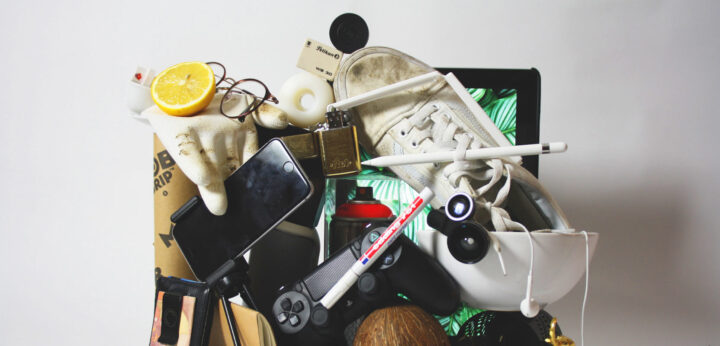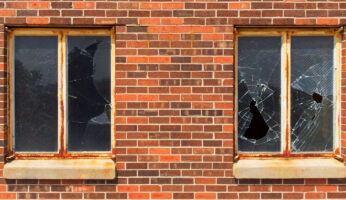Table of Contents
- What is personal property coverage in renters insurance?
- How renters insurance personal property coverage works
- Where is my personal property covered by renters insurance?
- What types of personal property are not covered by renters insurance?
- How much personal property coverage do I need?
- How to buy additional coverage for your personal property
- Filing a renters insurance personal property claim
What is personal property coverage in renters insurance?
Personal property coverage is the part of your renters insurance policy that states that your insurer will pay to repair or replace damaged, destroyed, or stolen personal property.
What is personal property?
Your personal property includes your clothes, electronics, books, appliances, cleaning products, cosmetics, furniture, and even your food — in other words, almost everything that you own.
It’s actually easier to list the items that aren’t covered by your renters insurance personal property coverage. It doesn’t include:
- Your building: As a tenant, you don’t own the building you live in, so the structure isn’t considered your personal property and isn’t covered by renters insurance.
- Your landlord’s property: Renters insurance only covers your personal property, so appliances and furniture that belong to your landlord aren’t covered either.
- Your car: Renters insurance doesn’t cover cars or other motor vehicles. To insure those, you need to get auto insurance.
- Pets: Although you legally own your pet, insurers don’t group animals in the same category as inanimate objects, so renters insurance doesn’t cover damage (i.e. injury) done to your pets. (However, renters insurance policies include pet liability, which covers most types of damage caused by pets, such as dog bites.)
Virtually everything else in your home is considered your personal property and is covered by renters insurance. Additionally, personal property coverage is separate from personal liability coverage. That type of coverage protects you if someone claims you damaged their personal property or injured them in some way, and they try to take you to court.
Your property is insured against “covered perils”
Every renters insurance policy features a list of covered perils, such as fire, hail, and lightning. Per your policy terms, your insurer is obligated to pay for damage to your property caused by those perils.
Because most renters insurance policies are what’s called named perils policies, they won’t pay for disasters that aren’t specifically named in that list. These disasters are known as excluded perils.
What types of property damage does renters insurance cover?
All insurers write their policies slightly differently, but most renters insurance providers cover similar perils.
In general, renters insurance covers your property against common household accidents, such as theft, fire, vandalism, and many common plumbing disasters, such as burst and frozen pipes.
However, renters insurance doesn’t usually cover earthquakes, floods, or pest infestations (such as bed bugs).
For a full list of commonly covered and excluded perils, see our article on what renters insurance covers.
How renters insurance personal property coverage works
If your property is stolen, damaged, or destroyed, you have several days to tell your renters insurance company what happened. Doing so is referred to as filing an insurance claim.
Your insurance company will review your claim, and if they agree that the damage was caused by a covered peril, they’ll write you a check or send you money to reimburse you for your loss.
However, you’ll have to pay a fixed portion of the cost yourself. This amount is called your renters insurance deductible, and you choose it when you buy your policy. For example, if your deductible is $500 (a very common amount) and you file a property claim for $2,000, your insurer will pay out a maximum of $1,500.
The amount you’ll receive is further affected by two things: your policy’s coverage limits and the type of personal property coverage that your policy provides.
Types of personal property coverage
There are two types of personal property coverage in renters insurance: actual cash value and replacement cost. It’s important to know the difference.
Actual cash value coverage
With this type of coverage, you get a payout for the current value of your possessions — in other words, approximately what you’d have gotten if you sold them in a secondhand market. (Before they were damaged, that is.)
Because items depreciate, or lose their value over time, this means that with an actual cash value policy, your provider will pay out less for your personal property than you originally paid for it — unless you bought it for a steep discount or secondhand.
Replacement cost coverage
With this type of policy, your insurer will pay out the full cost of replacing your lost items with brand new equivalents. For example, if you file a claim for your stolen iPhone 10, your insurer will reimburse you the cost of a new iPhone 10.
Replacement cost coverage is a bit more expensive than actual cash value coverage, but if your insurer offers the choice, we recommend getting it because it covers your items much more completely.
Whichever type of coverage your policy provides, there’s another factor that affects how much your insurer will pay for your items — your policy’s coverage limits.
Limits on personal property coverage
Renters insurance covers your property up to a certain maximum amount, which you select when you buy your policy.
Most insurers let their customers select between $10,000 and $250,000 in personal property coverage, and most renters tend to purchase between $15,000 and $30,000. (Surveys have found the average renter owns around $30,000 of property, but if you’re relatively young, you might have a lot less.)
Special coverage limits on expensive items
Moreover, most policies place special limits on how much they’ll pay for certain types of expensive items, such as jewelry and electronics. In renters insurance, these limits are referred to as special limits of liability, or simply as sub-limits.
Sub-limits are usually much lower than your policy’s general property coverage limit. For example, your policy might cover your possessions up to $15,000, but only cover electronics up to $2,500.
Common sub-limits
Sub-limits vary from policy to policy and insurer to insurer. You should check your policy to find out exactly what sub-limits it features.
However, most major renters insurance providers write fairly similar sub-limits into their policies. The following list can give you a general idea of what to expect:
- Money and banknotes – $200
- Gold and silver bullion – $200
- Securities – $2,500
- Watercraft, trailers – $2,500
- Jewelry, watches, furs – $2,500
- Firearms – $2,500
- Silverware – $2,500
- Business property – $2,500
- Off-premise business property – $500
- Cameras – $2,500
- Credit cards – $500
- Electronics – variable, often $1,500
Sometimes, sub-limits only apply when property is lost to a specific type of peril. For example, in many policies, the sub-limit on jewelry only applies when it’s stolen — so your renters insurance might cover your wedding ring up to $1,500 if someone steals it, but up to your policy’s normal limit (e.g. $15,000) if it’s destroyed in a fire.
How to increase your policy’s sub-limits
If you’re lucky enough to own enough expensive items to exceed one of your policy’s sub-limits, you might want to consider adding additional coverage with an addition to your renters insurance policy called a rider.
Most insurers offer additions called scheduled property riders to increase the sub-limit on a particular class of items. We cover these in more detail later.
Where is my personal property covered by renters insurance?
Your personal property is covered by your renters insurance policy no matter where in the world it is. It’s covered whether it’s inside your home or somewhere else entirely.
Coverage inside your home
Your renters insurance covers practically all the property in your home, with the stipulation that it has to be your property — not your roommate’s and not your landlord’s. (Technically, if your roommate or friend lends you an item, you can file a claim for it, but that claim will go on your insurance history, not theirs. Your insurer will essentially treat it as your property.)
Coverage outside your home
Again, your policy covers your personal property no matter where it is in the world. Among other things, renters insurance protects:
- Things that you take with you while travelling
- Items in storage units
- Belongings left inside your car
However, there’s a catch: most policies place a limit on how much they’ll cover your off-premises property. This is usually either 10% of your normal personal property coverage limit or $1,000, whichever is greater.
For example, if your policy insures your personal property up to $25,000, your off-premises property is covered up to $2,500. (10% of $25,000 is $2,500.)
Exceptions to the 10% limit
In most policies, there are a couple of exceptions to this “partial coverage” or “10% coverage” rule:
1. Your house or apartment becomes uninhabitable and you’re forced to relocate
This might happen if your landlord decides to renovate your building or if there’s a disaster like a major fire (the sort of disaster for which you’d use your loss-of-use coverage).
If you have to vacate your home and go to a hotel for a couple of weeks, any property you take with you will remain fully covered, assuming your policy features this exception.
2. You just moved to a new home and you haven’t had time to transfer your policy yet
When you move, you’ll usually get full coverage for 30 days in both locations, even if you haven’t told your insurer that you want to transfer your renters insurance policy to a new address yet. This grace period gives you time to move your things over and get settled in.
What types of personal property are not covered by renters insurance?
Some types of personal property are not covered by renters insurance. There are a few different types of excluded items:
Cars and other motor vehicles
As mentioned, renters insurance doesn’t cover cars, vans, or other motor vehicles. It also doesn’t cover vehicle accessories or parts — if someone breaks into your car and steals the sound system, the theft isn’t covered.
Aircraft
Similarly, renters insurance doesn’t cover aircraft. If you happen to own a helicopter, you need a dedicated insurance policy to cover it, the same way you need an auto insurance policy to cover your car.
This exception only applies to manned aircraft. Small drones and model aircraft are considered toys or gadgets, not vehicles, and are covered by renters insurance.
Animals
Pets don’t count as personal property in your renters insurance policy. If your pet gets sick, renters insurance won’t pay your vet bill. You need a pet insurance policy for that.
If you own a valuable exotic animal, renters insurance also won’t reimburse you for it if someone steals (i.e. kidnaps) it. If you’re an avid collector of Arabian stallions, you’ll need to go looking for a dedicated insurance plan for them.
Illegal possessions
Hopefully it won’t come as a surprise that renters insurance doesn’t cover illegal items or items used in illegal activities. However, it does cover legally acquired drugs.
Items borrowed by or rented out to others
If you lend your personal belongings to other people, they aren’t covered by your renters insurance until they’re returned. Be careful about lending anything valuable to your friends or family members.
Property in other excluded circumstances
Most policies single out a few special circumstances in which they won’t cover your personal property. For example, many insurers stipulate that if you have to temporarily vacate your home while it’s being renovated, property you leave in the unit isn’t covered against theft until you return.
If you sublease your home to another tenant, your policy probably won’t cover it if they steal property that you left in their section of the rental unit, either.
It’s up to your insurer what exclusions they want to write into their renters insurance policies. Check your policy terms to find out if there are any that you need to worry about.
How much personal property coverage do I need?
The amount of personal property coverage that you need depends on how much your belongings are worth.
You might own more than you realize. The average renter’s possessions are worth about $30,000 — when you total up the value of your clothing, furniture, and electronics, it can really add up.
How much is my personal property worth?
When you apply for renters insurance, you should make a home inventory to help you work out how much property you need to insure. To do this, walk through your home, take photos of your belongings and look how much your highest-value items are worth, then make an educated guess about the rest.
Don’t forget to take pictures of any receipts you have saved, and record any serial and model numbers on things like kitchen appliances and electronics.
The value of your belongings can grow quickly, so after you calculate the estimated value of your personal property, consider buying an extra $10,000 to $15,000 of coverage to ensure that you’ll be protected for the foreseeable future. (That sounds extravagant, but the price of renters insurance is low enough that doing so doesn’t add much financial burden.)
Example: Calculating personal property coverage
To see how someone might calculate the amount of coverage they need, let’s imagine a young person who lives and works in the city. She owns a $750 smartphone, a $1,000 laptop, a $500 coffee machine, and a game console that’s worth $500. The value of her major items can be calculated like so:
$750 + $1,000 + $500 + $500 = $2,750
She’s not sure how much her clothes and accessories are all worth, but she knows she owns at least a few moderately expensive items — a nice blazer and a few leather handbags and boots, all probably worth a few hundred dollars each. On top of that, she has a shelf of cosmetics and a small but well-stocked kitchen.
Figuring out how much all that is worth sounds difficult and tedious, so she decides to play it safe and doubles her original figure:
$2,750 x 2 = $5,500
She then adds an extra $10,000 to $15,000 to this figure to account for the cost of her other belongings and the ones she’s likely to acquire in the near future.
She’s not interested in buying any more expensive clothes or gadgets, and most of her furniture is secondhand. This means she feels comfortable going with the lower end of that range and adding $10,000:
$5,500 + $10,000 = $15,500
That’s a kind of awkward number to be left with, so she rounds down and ends up purchasing $15,000 in renters insurance personal property coverage.
Your inventory doesn’t need to be exact
Notice that in the example, the estimates our hypothetical renter came up with were pretty rough.
It’s fine if yours are like that, too. Of course, the more precise you can be with your home inventory, the more you’ll be able to fine-tune your renters insurance coverage to your needs, but your time is valuable too. It’s perfectly fine if you just want to document your most expensive possessions and take your best guess as to the value of the others.
How to buy additional coverage for your personal property
If you need to add more coverage for your personal property, there are several add-ons you can get for your policy:
Scheduled property rider
A scheduled property rider or personal property coverage endorsement is a type of add-on that allows you to increase your claim limit for a specific type of item.
For example, maybe your policy only covers jewelry up to $2,500, and you have several necklaces that you want to cover up to (or beyond) your policy’s normal property coverage limit of $30,000.
Your insurance company might let you buy a scheduled property rider to add the coverage you want. If they don’t mention scheduled property riders on their website, call and ask to speak with an agent.
Floaters
Floaters are similar to scheduled property riders, except that instead of covering a type of property, like jewelry, they cover one single item, like a sapphire necklace.
Floaters allow you to purchase coverage for your most valuable possessions without wasting money on unneeded coverage for that entire class of items.
If you want to buy a floater, you’ll almost certainly have to call your insurer instead of just getting it online. Be prepared to provide documentation — depending on what you’re trying to insure, they might ask for an appraisal or another document that certifies the item’s value and ownership.
Replacement cost rider
If you have an actual cash value policy, your insurer might allow you to select a few items that you’d like to provide replacement cost coverage to. The add-on that allows you to do this is called a replacement cost rider.
As with scheduled property riders and floaters, buying a replacement cost rider lets you focus your coverage on the items you really care about and save money on the items you don’t.
Filing a renters insurance personal property claim
You should only file a renters insurance claim when the value of your losses is greater than your deductible (which you pick when you buy your policy). The most common renters insurance deductible is $500.
Every insurer has a deadline for filing a claim — usually 48 to 72 hours after the incident that caused the damage. Make sure that you file your claim in time.
If you were the victim of a crime, such as theft, you should also report it to the police as soon as possible. Get a copy of the police report to provide to your insurer.
If you have other documentation, provide it as well. You can file a renters insurance claim without receipts, but if at all possible, provide some type of evidence (e.g. photographs of the item before and after it was damaged, a bank statement recording your purchase, etc).
Related Questions
- What is guest medical coverage in renters insurance?
- What is a sub-limit in renters insurance?
- Does renters insurance cover home-based businesses?
- Does renters insurance cover gold or silver bullion?
- What does "dependent in the care of" mean in renters insurance?
- Does State Farm renters insurance cover hotel stays?






